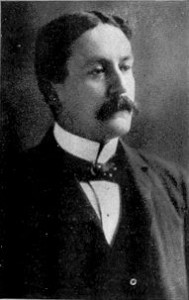
All-American organ recital throws fresh light on neglected composers
The coming long weekend brings the Fourth of July, and, with it, an annual chance for Americans to focus on American music. And I don’t mean the kind of American music that conquered the world’s popular culture. That’s one of this country’s great contributions to the globe, and it can take care of itself. What I’m interested in focusing on this Fourth is the forgotten heritage of American classical music.
There have been several popular classical composer standouts in American history, including Aaron Copland, George Gershwin, Samuel Barber and a couple others, folks whose music is guaranteed to bring in the audience. One of the most popular of all is John Philip Sousa, whose music gets a big workout this time of year.
But there have been a host of other honest, strong composers whose music has slipped out of the repertory, and sometimes for no real good reason. At 6 p.m. Sunday, Trinity Cathedral organist Matthew Steynor presents an all-American program (with one exception) of music that features the big names – Copland, Gershwin, Sousa – but also offers newer music by William Bolcom, David Hurd, and William Albright.
Steynor also will play two pieces by musicians of an older generation who once had large, major careers and who have been lost to the national memory since then. Horatio Parker (1863-1919, pictured at top) was a leading professor at Yale (his most famous student was Charles Ives) whose opera “Mona” had its premiere at the Metropolitan (the star was Louise Homer, Samuel Barber’s aunt) in 1912, and whose oratorio “Hora Novissima” was once heard everywhere in the early part of the 20th century.
Parker’s organ music is still heard now and again, and Steynor will play the Scherzo movement from the composer’s Sonata (in E-flat minor, Op. 65). This is quite conservative music, but charming and memorable for all that, and emblematic of a high level of craft its creator brought to his task.
Also on the program is the Toccata of Leo Sowerby (1895-1968), a teacher of Ned Rorem and widely revered by organists and choir directors for his vast liturgical output. Music for the church (Sowerby was choirmaster at Chicago’s St. James Episcopal Cathedral for 35 years) constitutes another enormous body of work by American composers, and getting the full flavor of some of these writers can’t be done unless you include their religious music, too.
Sowerby’s Toccata is a popular organ piece, and it has a good angular feel to it that always makes a strong impression. Also on the program are two pieces by William Albright (1944-1998), a much-beloved composition teacher at the University of Michigan best known for his enthusiasm for ragtime, and a passacaglia by David Hurd, who teaches at the General Theological Seminary in New York.
Two preludes on familiar hymns by the eminent composer William Bolcom are scheduled along with Steynor’s arrangement of Gershwin’s “Cuban Overture.” Only recently has this piece begun to make a return to orchestral programs, at least in my recent experience. It’s a good work, even if it’s tourist music, and it will be fascinating to hear how it gets transferred to the organ.
Copland is represented Sunday by his “Episode,” drawn from his score for the film treatment of Thornton Wilder’s “Our Town,” and Sousa, perhaps inevitably, is heard in his immortal 1897 march “The Stars and Stripes Forever.” The only non-American piece is one that achieved honorary American status as the ersatz spiritual “Goin’ Home:” the Largo from Antonin Dvorak’s Ninth Symphony (“From the New World”), which, after all, was written and premiered in New York while the Czech composer was leading the National Conservatory of Music.
I’ve written about Steynor’s work before, and he’s a fine organist who, like many of the most interesting performers, likes to seek out fresh repertory. In this case, Steynor, who’s British, has done yeoman service for the music of the United States.
This concert, followed by Independence Day, will give all of us a good reason to give a few moment’s thought to the classical composition heritage of this country, a heritage that deserves far more attention and respect than it usually gets.
Recent Content
-
Artsarticle ·
-
Artsarticle ·
-
Artsarticle ·

